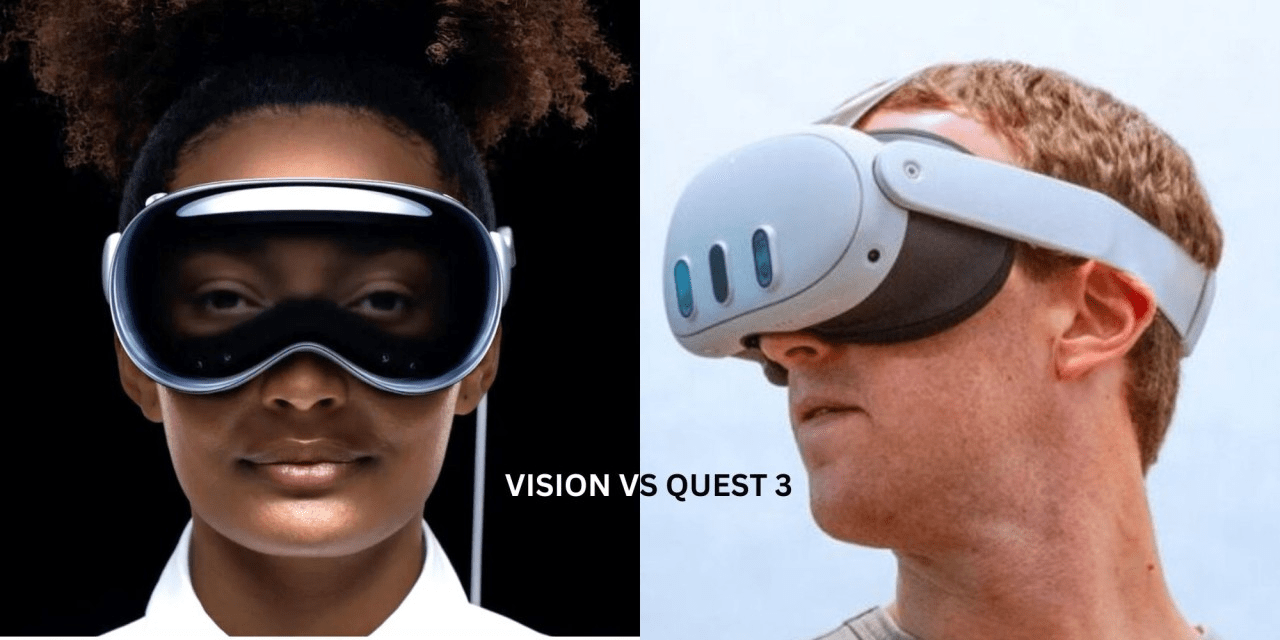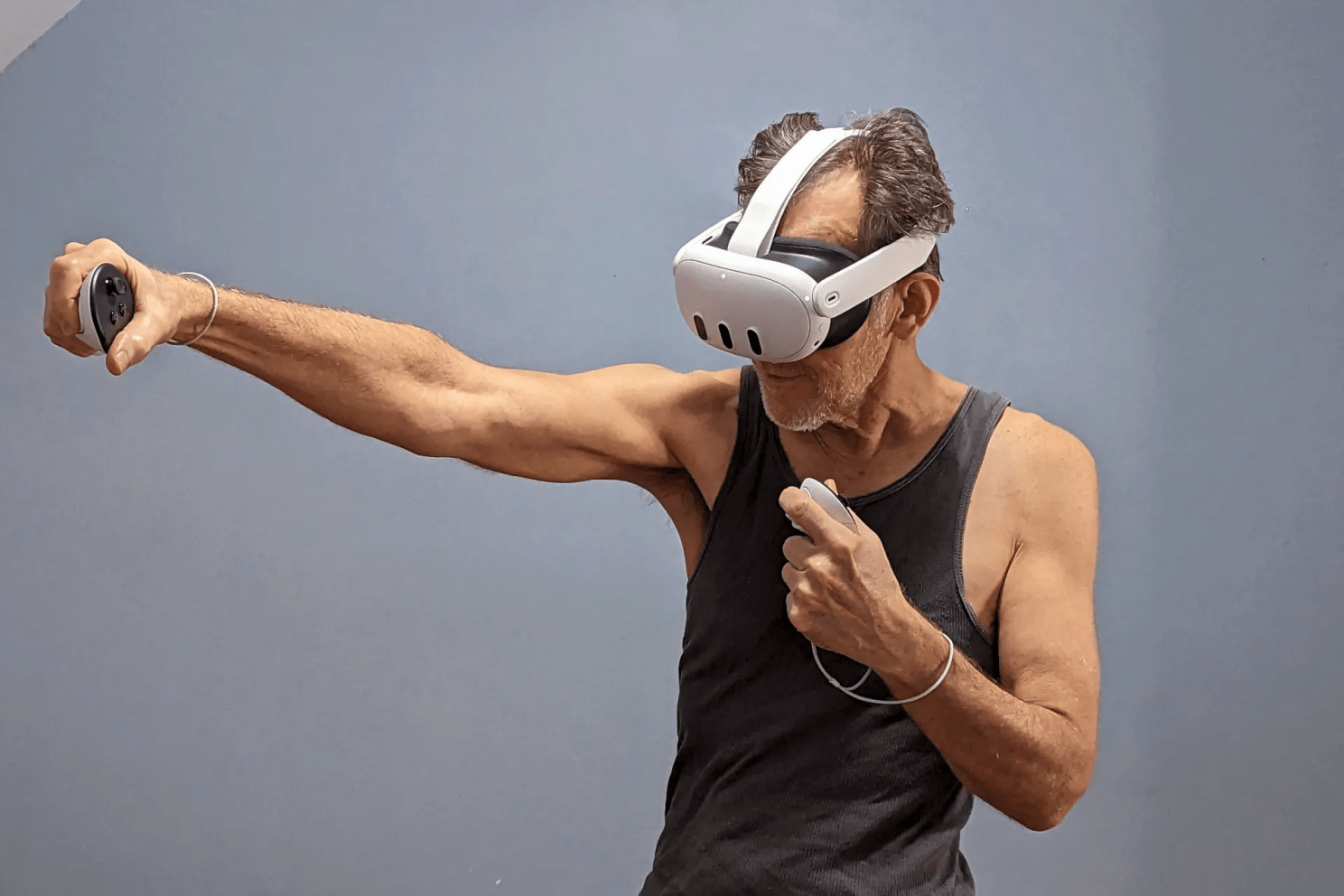
Meta’s Quest 3 vs. Apple’s Vision Pro – We All Win.
Priced at $3,500 and $500 respectively, Apple’s Vision Pro and Meta’s Quest 3 offer consumer new and exciting possibilities for immersive experiences, yet they differ significantly in their approach and capabilities.
Mixed-Reality Experience:
Both the Apple Vision Pro and Meta Quest 3 offer standalone VR headsets with mixed-reality passthrough capabilities, blending virtual content with the real world. Equipped with external cameras, they provide users with a window into their surroundings, overlaying virtual displays, games, and objects onto their environment. While both devices utilize depth sensors for spatial mapping, the quality of the mixed-reality experience varies. The Quest 3 delivers an acceptable but somewhat fuzzy and distorted view of the real world, making it challenging to discern details. The Vision Pro boasts sharper cameras, offering a clearer view of the surroundings. However, its micro-OLED displays may exhibit slight motion blur.

Work and Productivity:
When it comes to productivity, the Vision Pro shines with its crisp display and multitasking capabilities. It serves as a versatile tool for professionals, providing a seamless integration with iOS apps and services. Users can access a wide range of productivity apps, conduct video calls, and even multitask with multiple virtual Mac monitors simultaneously.The Quest 3, while capable of basic productivity tasks, lacks the multitasking prowess of the Vision Pro. However, it offers compatibility with apps like Microsoft Office and Meta’s Horizons Workrooms for collaborative work experiences.

Gaming and Entertainment:
Gaming enthusiasts will most likely find the Quest 3 to be a more compelling choice, thanks to its extensive library of VR games and compatibility with Steam VR titles. With included controllers and support for immersive gaming experiences, the Quest 3 transforms into a versatile gaming console, suitable for both casual and hardcore gamers. The Vision Pro offers some gaming capabilities, but its focus lies more on immersive experiences rather than gaming. It lacks the extensive library of games found on the Quest 3 and may not be the ideal choice for dedicated gamers.

Fitness and Wellness:
If you want to get in shape, the Quest 3 emerges as a frontrunner, offering a wide array of fitness apps and active exercise experiences. Its lightweight design and compatibility with fitness tracking devices like the Apple Watch make it an excellent companion for workouts and other wellness activities. The Vision Pro, while capable of supporting fitness apps, lacks the robust fitness ecosystem of the Quest 3. Its weight and design also make it less workout friendly.

Price and Accessibility:
One of the most significant factors influencing consumer choice is the price point. While the Vision Pro commands a premium price of $3,500, the Quest 3 offers a more affordable option at $500, making it accessible to a broader audience. Based on price alone many consider the Quest to be a discount option when entering the AR device space.

Both the Apple Vision Pro and Meta Quest 3 represent significant advancements in mixed-reality technology, each catering to different user needs and preferences. While the Vision Pro excels in productivity and display quality, the Quest 3 offers superior gaming and affordability. In the current high inflation economy we cannot forget the reality of individual budget constraints.
Ultimately, the choice between the two depends on individual priorities, whether it’s work, entertainment, or fitness you are after.
As a game producer and AR enthusiast I am happy that there is now competition between Meta and Apple in this space. Both companies are pushing the boundaries of technology and this expands our options on both the hardware and software fronts. The rivalry between Meta and Apple will ultimately lead to better consumer choice and better products for us to use and develop on.





